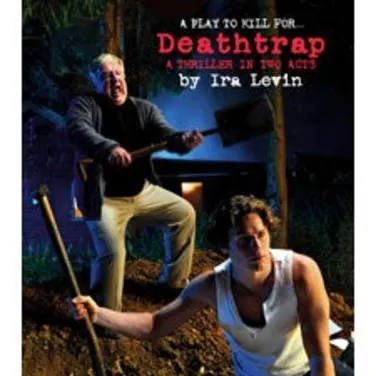
About
1) Dutch hardcore band 2) Japanese thrash metal band 3) German metal band 4) Swedish metal band Read more on Last.fm
Genres
No info to show.
Frequently Asked Questions
- What is the plot of the play Deathtrap?
- The plot of the play Deathtrap centers on Sidney Bruhl, a once-successful playwright suffering from writer’s block and desperate for another hit. When Sidney receives a brilliant new script from his student, Clifford Anderson, he invites Clifford to his secluded Connecticut home under the pretense of collaborating. However, Sidney secretly plots to murder Clifford and claim the play as his own. What follows is a suspenseful and darkly comedic series of twists, double-crosses, and shocking revelations, as the two men engage in a deadly game of deception. The story explores themes of ambition, betrayal, and the blurred line between fiction and reality, keeping audiences guessing until the very last moment. Deathtrap is renowned for its clever structure, witty dialogue, and ability to surprise even the most seasoned theatre-goers, making it a classic in the thriller genre.
- Was Deathtrap ever made into a movie?
- Yes, Deathtrap was adapted into a movie in 1982. The film, directed by Sidney Lumet, starred Michael Caine as Sidney Bruhl and Christopher Reeve as Clifford Anderson, with Dyan Cannon playing Sidney’s wife, Myra. The movie closely follows the plot of the original stage play, maintaining its suspenseful twists and dark humor. The film received praise for its faithful adaptation, strong performances, and clever storytelling, much like the play. Michael Caine’s portrayal of the cunning playwright and Christopher Reeve’s turn as the enigmatic student were particularly well-received. The Deathtrap movie remains a popular example of stage-to-screen adaptations and is often recommended for fans of thrillers and mystery dramas.
- Is Deathtrap worth watching?
- Deathtrap is absolutely worth watching for fans of suspense, drama, and clever storytelling. As one of Broadway’s longest-running thrillers, the play masterfully blends dark humor, shocking plot twists, and psychological intrigue. Its reputation as a classic is well-deserved, thanks to its engaging characters, witty dialogue, and the continual subversion of audience expectations. The tension between Sidney and Clifford, combined with the play’s layered narrative and unexpected turns, keeps viewers on the edge of their seats from start to finish. Whether experienced on stage or through the acclaimed film adaptation, Deathtrap delivers a theatrical experience that is both entertaining and intellectually stimulating. Critics and audiences alike have praised its ability to surprise and delight, making it a must-see for anyone who enjoys thrillers or theatre.
- Who played in Deathtrap on Broadway?
- The original Broadway production of Deathtrap opened in 1978 at the Music Box Theatre. The lead role of Sidney Bruhl was played by John Wood, while Victor Garber starred as Clifford Anderson. Marian Seldes played Myra Bruhl, Sidney’s wife, and received particular acclaim for her performance—famously appearing in every single performance during the play’s original Broadway run. Other notable cast members included Marian Winters as Helga ten Dorp and Richard Woods as Porter Milgrim. The production was directed by Robert Moore and written by Ira Levin, whose script’s wit and suspense captivated audiences for nearly 1,800 performances. The combination of a stellar cast and a gripping story helped secure Deathtrap’s place as one of Broadway’s best-loved thrillers.
- What is the purpose of a Deathtrap?
- The purpose of a “deathtrap,” both as a concept in fiction and as the title of Ira Levin’s play, is to create suspense and danger, usually involving a clever or seemingly inescapable predicament. In the context of the play Deathtrap, the term refers to both the literal traps set by the characters and the metaphorical entrapment of being ensnared in a web of deceit, ambition, and betrayal. Deathtraps are a staple in thriller and mystery genres, designed to heighten tension and keep audiences guessing about the fate of the characters. They serve to challenge the protagonists, create high stakes, and deliver dramatic twists that drive the story forward. In the play, the “deathtrap” is as much psychological as it is physical, with characters constantly trying to outwit and outmaneuver each other to achieve their own ends.